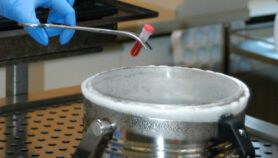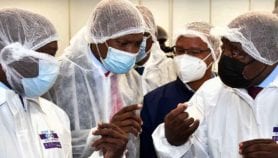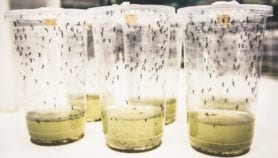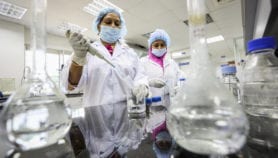By: Mike Ives
Send to a friend
The details you provide on this page will not be used to send unsolicited email, and will not be sold to a 3rd party. See privacy policy.
[HANOI] Farmers could benefit from increased rice yields and new varieties of the staple crop adapted to climate change, with the launch of a global research programme that aims to lift millions out of hunger and poverty by 2035.
The Global Rice Science Partnership (GRiSP) was launched by the Consultative Group on International Agriculture Research (CGIAR) at the 3rd International Rice Congress in Hanoi, Vietnam, this week (8–12 November).
It is the first of 15 CGIAR research programmes — formally known as "mega-programmes" — aimed at increasing food security and protecting the environment over the next 25 years.
CGIAR — founded in the 1970s to channel funds into agricultural research — has radically reformed its research activities in the last year, rallying donor funding around a series of mega-programmes to promote more joined-up, thematic research. Although the move was criticised by some, who feared the reforms would distance decision-making from those working on the ground, it went ahead.
Now, the GRiSP mega-programme aims to improve rice yields and prevent more than one billion tons of carbon dioxide emissions by 2035, through better irrigation methods and reduction of rice farming-related deforestation.
The five-year initiative will cost nearly US$600 million. The Bill & Melinda Gates Foundation will contribute about US$70 million per year, said Prabhu Pingali, deputy director of agricultural policy and statistics at the foundation. He said other donors include the United States Agency for International Development and the UK’s Department for International Development.
"Finally all the rice research in the CGIAR will happen under one umbrella … so that you can have targeted, focused efforts around major outputs rather than duplication of effort," Pingali told SciDev.Net.
Russell Reinke, a rice breeder at Yanco Agricultural Institute, in Australia, said some participants at the congress wondered if CGIAR’s efforts to coordinate rice research are really necessary.
"There’s a point at which linkages can benefit, but if they are forced too far, you simply waste resources, and you don’t really achieve an increase in efficiency," Reinke told SciDev.Net.
Robert Zeigler, director-general of the International Rice Research Institute, said at a press briefing on Tuesday (9 November) that it is too early to say whether the mega-programmes will succeed. But he noted that in Hanoi this week, French officials signalled their intention to create a national rice research institute – "FRiSP" – modelled on GRiSP.
"I think that’s concrete evidence that [GRiSP] is already beginning to have an impact on how research is organised globally," Zeigler said.
See below for a video of the GRiSP launch during the 3rd International Rice Congress (8–12 November), by irrivideo:













